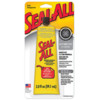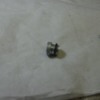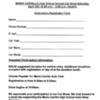Having finally found the source of a fuel leak to be this loose/leaky (lead? aluminum?) "plug" at the very front of the (stock 4300 4V) carb, what is the best way to cure/stop it?
Stake (center? edges?) with a pin punch?
Hammer it back in?
Stake, hammer, clean, JB weld?
A car show on Saturday the 1st (no fooling) needs another Pantera in attendance, just not one that's on fire!.......TIA
Attachments
Original Post





